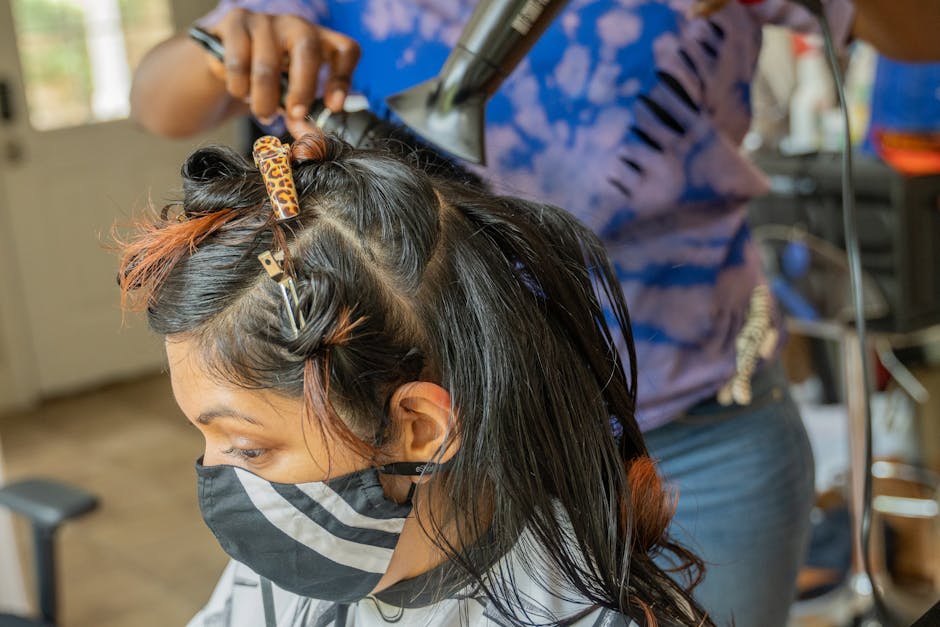Overview of Different Hair Treatment Options
Overview of Different Hair Treatment Options
Blog Article

Maintaining healthy hair is an essential aspect of personal grooming that influences not just appearance but also overall confidence. With a plethora of hair treatment options available, it’s crucial to understand what works best for individual hair types and concerns. This article aims to provide valuable Hair treatment insights, helping you navigate through various treatments, assess their effectiveness, and stay informed about emerging trends in hair care.
Overview of Different Hair Treatment Options
There are numerous hair treatment options, each designed to address specific issues, such as dryness, damage, or hair loss. Some of the most common treatments include:
- Deep Conditioning Treatments: These products penetrate the hair shaft to provide moisture and nourishment. Ideal for dry or damaged hair, they often contain oils, proteins, and other beneficial ingredients.
- Oils and Serums: Natural oils like argan, coconut, and jojoba oil can help improve hair texture and shine. Serums, on the other hand, can provide protection against heat and environmental damage.
- Hair Masks: Often used as a more intensive treatment, hair masks deliver concentrated nutrients to the hair, making them suitable for weekly or bi-weekly use.
- Scalp Treatments: A healthy scalp is vital for hair growth. Treatments that focus on exfoliating and nourishing the scalp can help combat issues like dandruff and itchiness.
- Professional Treatments: Options like keratin treatments, chemical relaxers, and color treatments are often administered in salons and can provide dramatic changes but may require careful consideration due to potential damage.
Effectiveness of Popular Hair Treatments
When evaluating the effectiveness of various hair treatments, personal experiences and individual hair types play a significant role. For instance, deep conditioning treatments are widely praised for reviving dry hair, while users of scalp treatments often report improved hair growth and reduced dandruff. However, results can vary based on hair texture, porosity, and existing damage.
User testimonials can provide additional insight into how well certain treatments work. Many people have found that oils and serums not only enhance shine but also reduce frizz, especially in humid conditions. On the other hand, professional treatments, while effective, may not be suitable for everyone, as they can sometimes lead to further damage if not applied correctly.
Emerging Trends in Hair Care and Treatments
As the beauty industry evolves, so do the approaches to hair care. Some of the emerging trends include:
- Natural and Organic Products: There is a growing demand for hair treatments made from natural ingredients, free from harmful chemicals. Consumers are increasingly looking for sustainable and eco-friendly options.
- Customized Hair Treatments: Personalized treatments tailored to individual hair types and concerns are becoming more popular. Salons are starting to offer consultations and bespoke formulations to address specific needs.
- At-Home Treatments: The shift towards self-care has led to an increase in at-home treatment kits, allowing individuals to maintain their hair health without frequent salon visits. These kits often include a combination of oils, masks, and tools for effective application.
Practical Tips for Choosing the Right Treatment
When selecting a hair treatment, consider the following tips to ensure you choose the right option for your hair type and concerns:
- Identify Your Hair Type: Understanding whether your hair is straight, wavy, curly, or coily will help guide your choices. Different hair types may require unique formulations for optimal results.
- Assess Your Hair's Condition: Determine if your hair is dry, damaged, oily, or prone to breakage. This will influence the type of treatment you should seek.
- Read Reviews: Look for testimonials and reviews from others with similar hair types and concerns. This can provide insight into the effectiveness of various treatments.
- Consult a Professional: If unsure, consider consulting a hairstylist or dermatologist. They can provide tailored advice based on your specific hair needs.
In conclusion, understanding hair treatment insights is essential for maintaining healthy hair. By exploring different treatment options, assessing their effectiveness, and staying informed about emerging trends, you can make educated decisions that cater to your unique hair care needs. Whether you prefer professional treatments or at-home solutions, the right approach can significantly enhance the health and appearance of your hair.
For those looking to further enhance their hair care routine, investing in quality tools, such as hair dryers, can also contribute to better results. Explore various options to find what best suits your needs.
Report this page